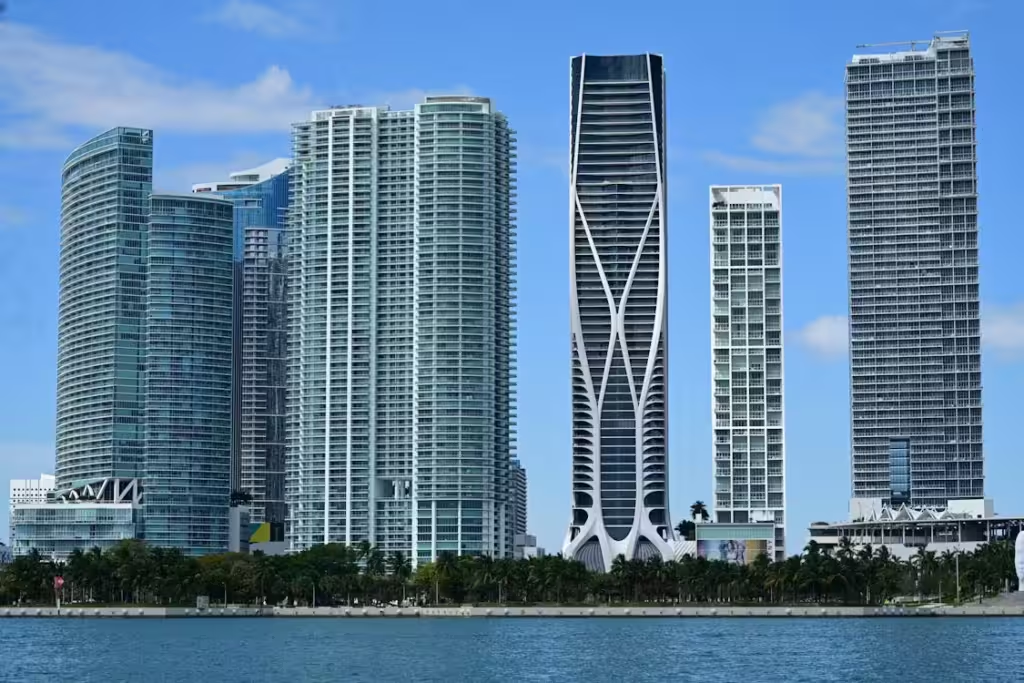The Brickell area in Miami is known today as a bustling financial district, filled with skyscrapers, luxury condos, and trendy restaurants. However, its history is rich and varied, reflecting Miami’s evolution from a small settlement into a major metropolitan city. Let’s delve into the fascinating history of the Brickell area.
Early Beginnings: The Tequesta and Early Settlers
Before European settlers arrived, the area that is now Brickell was inhabited by the Tequesta people, a Native American tribe. They lived along the Miami River and Biscayne Bay, thriving on the abundant fish and game in the region. Archaeological evidence suggests that the Tequesta established villages and created a complex society long before Miami was even a concept.
The first recorded European contact was in 1513 when Spanish explorer Juan Ponce de León landed in Florida. However, it wasn’t until the 19th century that the area began to see significant development.
The Arrival of the Brickell Family
The Brickell family, for whom the area is named, played a crucial role in its development. William and Mary Brickell moved to Miami in 1871, attracted by the opportunities they saw in the emerging settlement. They established themselves as prominent landowners and entrepreneurs, opening a trading post on the south bank of the Miami River.
William Brickell was instrumental in promoting Miami as a viable place for settlement and business. His wife, Mary, was equally influential, known for her business acumen and her role in managing their extensive real estate holdings. Together, they accumulated significant land, including much of what is now known as Brickell.
The Early 20th Century: Growth and Development
The early 20th century saw Brickell evolve from a sparsely populated area into a burgeoning residential neighborhood. The completion of Henry Flagler’s Florida East Coast Railway in 1896 was a turning point, bringing new residents and tourists to Miami. The Brickells sold parcels of their land to developers, leading to the construction of grand mansions along Brickell Avenue, often referred to as “Millionaire’s Row.”
Brickell became known for its luxurious homes and affluent residents, contributing to Miami’s reputation as a city of wealth and glamour. The area’s development was somewhat interrupted by the Great Miami Hurricane of 1926, but it quickly rebounded in the following decades.
Post-War Boom: Transition to a Commercial Hub
The mid-20th century marked a significant shift for Brickell. As Miami grew, so did the demand for commercial and office space. The 1970s and 1980s saw the transformation of Brickell from a primarily residential area to a major financial district. High-rise office buildings and hotels began to dominate the skyline, reflecting Miami’s increasing importance as an international business center.
This period also saw the development of Brickell Key, a man-made island just off the mainland. Originally a dredging project in the early 20th century, Brickell Key was developed into a mixed-use community featuring luxury condominiums, commercial spaces, and recreational facilities, further cementing Brickell’s status as a desirable place to live and work.
The Modern Era: A Blend of Business and Luxury Living
Today, Brickell is synonymous with Miami’s financial district, home to major banks, law firms, and multinational corporations. It is often compared to New York’s Wall Street due to its concentration of financial institutions and corporate headquarters. However, Brickell is not just a business hub; it is also a vibrant residential area known for its upscale condos, cultural attractions, and entertainment options.
The development of Brickell City Centre, a massive mixed-use complex, has been a game-changer for the area. Opened in 2016, it features high-end retail stores, restaurants, office space, and residential units, creating a self-contained urban environment. The project reflects the modern trend of live-work-play spaces, appealing to young professionals and international residents.
Brickell’s Future: Continued Growth and Innovation
Looking ahead, Brickell shows no signs of slowing down. Continued investment in infrastructure, residential projects, and commercial developments will likely drive its growth. The area’s blend of history, modern amenities, and strategic location makes it one of Miami’s most dynamic neighborhoods.
As Miami continues to evolve, Brickell will undoubtedly remain at the forefront of the city’s transformation, embodying the spirit of innovation and progress that has defined its history.
Conclusion
From its early days as a Tequesta settlement and the arrival of the pioneering Brickell family to its current status as a global financial hub, the history of the Brickell area in Miami is a testament to the city’s growth and resilience. Its rich past and promising future make Brickell a fascinating area that continues to attract residents, businesses, and visitors from around the world.







